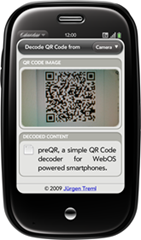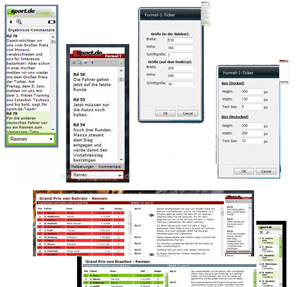This article is a short tutorial on how install WebOS applications on your Palm Pre independent of the region they are intended for, e.g. install US only apps that do not even show up in the app catalog outside the US on your French / German / Spanish Palm Pre. The process is rather simple as it basically just exploits the current behavior of the App Catalog’s update mechanism. Continue Reading
Bing Maps Making an Impression
It’s not often that I write an actual post about something I just came across on the net. Usually I just share interesting news via Google Reader here and the ‘Feed Favs’ section on my front page, but this is something I was so impressed by that I just want to show you the video right here without much talk.
Microsoft has become quite innovative in my opinion over the past months. Ranging from creative, refreshing and productivity boosting changes and features in Windows 7, to an actually competitive new search engine called Bing and the recently announced Windows 7 Phone Series with a quite unexpected look & feel, Microsoft apparently also wants a piece of that online maps cake. The following video, which I came across here, shows some of the latest (yet to be published) features of Bing Maps, some of which a rather impressive and astonishing than just cheap copies of what Google Maps offers.
But see for yourself:
Palm Prē: Really that good? *UPDATE*
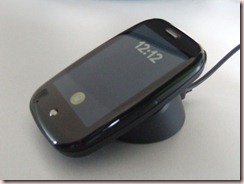 Short answer: Yes. In a few more words: It’s not an iPhone killer as many out there labeled it to be but it can easily keep up with it. I wasn’t quite sure which one to get, the iPhone or the Palm Prē, till the last moment but I finally decided to take the risk and give the Prē the benefit of the doubt. The Prē can’t keep up with the iPhone in every single aspect, there just are a few things where Palm just had no chance of overcoming the two year head start the iPhone has, the biggest aspect for sure being the App store. But the Prē more than compensates for this shortcomings by throwing in a number of creative ideas and features even the iPhone with all its apps has nothing to come up against with, like Synergy or MULTI TASKING. Ever tried to listen to web radio on the iPhone while downloading a large PDF in your browser and looking up a number of addresses just received via email in the Google Maps app, switching back and forth between the latter two?! Well, go ahead. Try! The bottom line is, the Prē doesn’t have everything the iPhone has but it surely doesn’t fall in the category of all those phones desperately trying to imitate the iPhone as closely as possible, failing miserably on the way there. It comes with its own set of unique and stylish features that allow things that aren’t even possible on the iPhone and over time, I’m sure, it will catch up further. Besides, most of those things the Prē brings along right out of the box are quite polished and reliable making it a real pleasure to use. Continue Reading
Short answer: Yes. In a few more words: It’s not an iPhone killer as many out there labeled it to be but it can easily keep up with it. I wasn’t quite sure which one to get, the iPhone or the Palm Prē, till the last moment but I finally decided to take the risk and give the Prē the benefit of the doubt. The Prē can’t keep up with the iPhone in every single aspect, there just are a few things where Palm just had no chance of overcoming the two year head start the iPhone has, the biggest aspect for sure being the App store. But the Prē more than compensates for this shortcomings by throwing in a number of creative ideas and features even the iPhone with all its apps has nothing to come up against with, like Synergy or MULTI TASKING. Ever tried to listen to web radio on the iPhone while downloading a large PDF in your browser and looking up a number of addresses just received via email in the Google Maps app, switching back and forth between the latter two?! Well, go ahead. Try! The bottom line is, the Prē doesn’t have everything the iPhone has but it surely doesn’t fall in the category of all those phones desperately trying to imitate the iPhone as closely as possible, failing miserably on the way there. It comes with its own set of unique and stylish features that allow things that aren’t even possible on the iPhone and over time, I’m sure, it will catch up further. Besides, most of those things the Prē brings along right out of the box are quite polished and reliable making it a real pleasure to use. Continue Reading
Eagle3D, POVray, Google SketchUp and SU2POV! Eh? Lost?
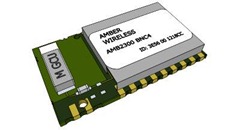 Time to shed some light on one of those secret tools in my little electronics toolbox: Eagle3D! If you are like me, using Cadsoft’s awesome (and free) layout and schematics tool Eagle and want good-looking pictures of your latest design, then you should probably heave a look at another free little tool designed to work on Eagle layouts to generate a 3D ray-traced rendering of your boards. The tool or rather script is called Eagle3D and can be found here.
Time to shed some light on one of those secret tools in my little electronics toolbox: Eagle3D! If you are like me, using Cadsoft’s awesome (and free) layout and schematics tool Eagle and want good-looking pictures of your latest design, then you should probably heave a look at another free little tool designed to work on Eagle layouts to generate a 3D ray-traced rendering of your boards. The tool or rather script is called Eagle3D and can be found here.
No why is this worth writing about? First of all because it’s an astonishing tool creating absolutely realistic images of your board before you even think about manufacturing and soldering it. But secondly, because Eagle3D is not the type of tool with funny, colored icons in a nice little toolbar where you just click one of those icons and your rendering is done. Unfortunately, using it as it comes out of the box, you’ll probably end up with only half of the parts on your board being rendered correctly or rendered at all. To see the rest of you parts on the board, there’s no way around some fine tuning of the Eagle3D scripts (or even some CAD construction work to build custom parts). Below is an image of one of my boards at various stages, rendered with the out-of-the box version of Eagle3D, rendered after editing some of the Eagle3D scripts and finally, rendered after construction and adding some custom parts with Google SketchUp. Continue Reading
Working like a pro… with Google SketchUp?! Maybe!
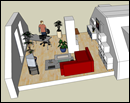 Few weeks ago I stumbled upon these posts here and here, mentioning Google SketchUp as a design tool for home improvement, etc. This reminded me of one of my own articles that’s been in the drafts pipeline for quite a while now and which I had almost forgotten about. So here we go, finally:
Few weeks ago I stumbled upon these posts here and here, mentioning Google SketchUp as a design tool for home improvement, etc. This reminded me of one of my own articles that’s been in the drafts pipeline for quite a while now and which I had almost forgotten about. So here we go, finally:
Almost two years ago when I was about to move in into a new apartment, I was on the look for some 3D home design tool. Now, there’s plenty of those tools on the market, developed by smaller software companies producing software off the assembly line, i.e. flooding the market with half-baked mass-productions at a ridiculous price point. So I didn’t really consider buying one of those things. Then again, professional CAD software at an even higher (though justified) price point as e.g. various products offered by Autodesk would have been a bit of an overkill for the task at hand, which is why I finally ended up using Google SketchUp. Continue Reading
How to install Palm Pre Mojo SDK on Windows 7 RC
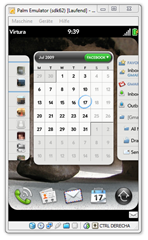 Trying to install the Palm Pre / Mojo / WebOS SDK on my computer running Windows 7 RC. As reported here, I experienced the problem of the installer failing silently towards the end without an error message, performing a rollback. I have no idea how long it takes Palm or even if they are planning on fixing this in the near future, but a look into Windows event log shows that the silent failure of the installer is caused by a Windows Update package for the User Mode Driver Framework which the SDK installer tries to install but which apparently fails to install on Windows 7.
Trying to install the Palm Pre / Mojo / WebOS SDK on my computer running Windows 7 RC. As reported here, I experienced the problem of the installer failing silently towards the end without an error message, performing a rollback. I have no idea how long it takes Palm or even if they are planning on fixing this in the near future, but a look into Windows event log shows that the silent failure of the installer is caused by a Windows Update package for the User Mode Driver Framework which the SDK installer tries to install but which apparently fails to install on Windows 7.
So my solution to the problem is simply not to make the SDK installer try to install this Windows Update Package. Since it’s only an update, it’s probably not crucial to running the SDK. So here’s a 15 min. procedure how to edit the Mojo SDK installer program based on this former blog post of mine, so that it skips the Windows Update package during install. Continue Reading
You’re welcome, RTL! Gern’ geschehen, RTL!
I think this is worth a post on my blog. Apparently a Windows Vista Sidebar gadget that I designed quite a while ago to follow a live Formula 1 news ticker has been good enough to serve as a template for German TV station RTL; a CLONING TEMPLATE!!!
RTL just put the same gadget on their own website. All they did was change a label move two buttons and change the gadget’s color from red to green. Nice job! I think you guys at RTL owe me some credit for that. You copied the overall gadget design and even the fly-out window. You didn’t even bother to change the settings dialog! This is a copy and paste job!!! I guess some intern then was asked to change a thing or two, right? A color, a label, even a button… I guess at least someone in the copy-cat company has heard Einstein’s wise words before: “Real creativity is knowing how to hide your sources”
Data Distribution Controller for UAV
I’ve just added a new page for a university project that I’ve recently finished. It’s a project aimed to design a hardware device that can manage the distribution of data among various subsystems of an unmanned aerial vehicle (UAV). All information on the project including the official project documentation and the slides of a talk given on this subject are available on the project page.
In this post, I’d only like to share the final result. More precisely, I’m showing two videos of the actual hardware piece rendered by a software called Eagle3D (or more precisely rendered by POV-Ray based on the script generated by Eagle3D). The result is just amazing. See for yourself!
How to force MSI files to install on non-supported OS
 Since I’m currently running Windows 7 Beta on my computer, I’ve ran into this issue quite a few times. You download some program you’ve been using on Windows Vista before, and once you try to install it, you’re being told “The operating system is not supported. Installation will be aborted.”
Since I’m currently running Windows 7 Beta on my computer, I’ve ran into this issue quite a few times. You download some program you’ve been using on Windows Vista before, and once you try to install it, you’re being told “The operating system is not supported. Installation will be aborted.”
For many 3rd party installer systems, using Microsoft’s compatibility wizard will solve the problem. Just tell the wizard that the program requires special permission and ran on older OS version (e.g. Vista) and it should install fine. Unfortunately, this usually doesn’t work for Microsoft Installer packages (*.msi files). Here’s a short tutorial on how to still force those packages to install (taking the Samsung LightScribe software as an example): Continue Reading

